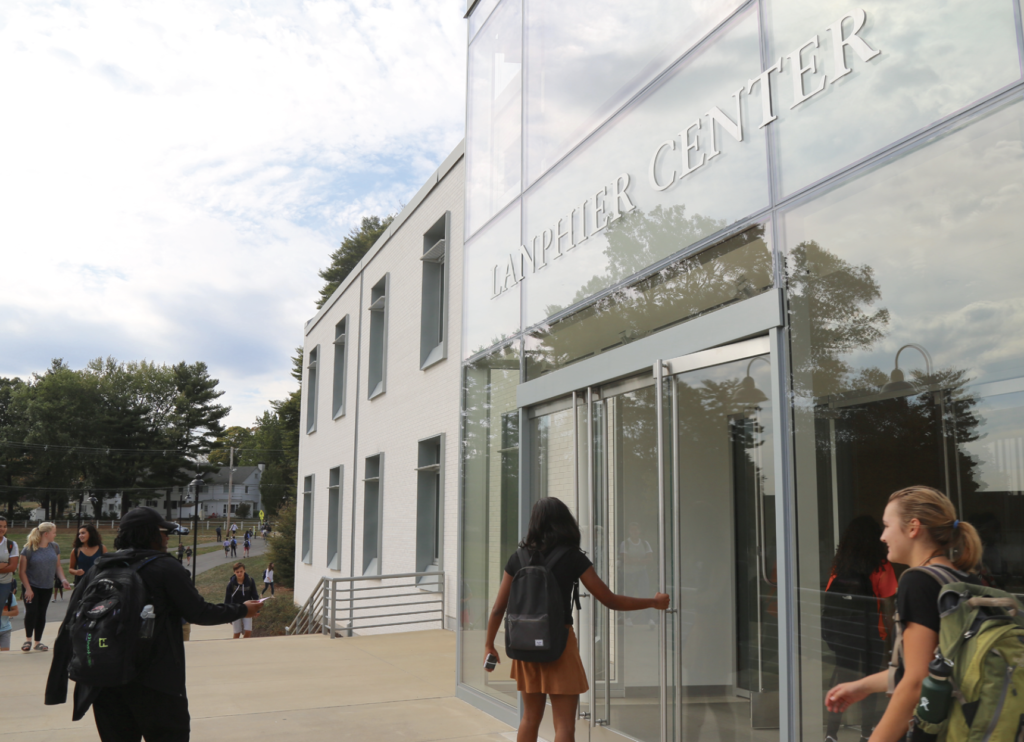
Students may work with other Choate students when solving Mr. Dan Proulx’s take-home problem sets
Every Choate student has experienced the drumming of pencils on paper while the 70 minutes that comprises a math test ticks by. But, what if there was another way for students to be assessed in their math class?
That’s the question Mr. Dan Proulx, currently an Honors Algebra II and Honors Precalculus teacher, has set out to answer. Soon after he arrived at Choate in 2017, Mr. Proulx began to use collaborative problem sets, sometimes known as “take-home tests,” in place of traditional in-class tests in his math classes.
Mr. Proulx first implemented problem sets as a testing strategy in his linear algebra and modern math classes. He said, “My view was that I should start preparing them for college … In my college experience, I had more problem sets and more collaborative learning.” The logical conclusion, he explained, was to assess his students, who were already learning college-level math, using problem sets, too.
The problem sets, since expanded to his algebra and precalculus classes, cover the same content that an ordinary test would, but students have around a week to complete them. However, in exchange for the extra time, the questions are far more conceptual and lack obvious answers.
The hallmark of the problem sets, of course, is the fact that students are encouraged to work through the problems together; in addition to their classmates, students can also work with students from other sections or even those in higher-level math classes. Additionally, the problem sets are completely open-note. The caveat? Students must “cite their sources,” by denoting by name when another student came up with a part of their final solution.
Lauren Hsu ’24, a student in Mr. Proulx’s Honors Algebra II class, said, “I think problem sets allow students to focus on learning the material instead of worrying about their grades. The great thing about problem sets is that you learn a lot while you’re doing them.”
Some students also note that problem sets foster a different kind of learning. “I think I learn better short-term for tests, but for my long-term memory, problem sets are better,” said Nathan Lang ’22, a student in Dr. Jessica Pfeil’s multivariable calculus class — another that has adopted the problem-set method.
However, Mr. Proulx hasn’t completely thrown traditional tests out the window. When he teaches his algebra and precalculus classes, he uses problem sets in tandem with timed testing. When planning those classes, “If I think about what I’m trying to prepare you for, it’s future years and also standardized testing. There’s value in doing the timed, sit-down-take-a-test thing, so you get practice knowing what that feels like,” said Mr. Proulx. On the other hand, upper-level math classes like multivariable calculus exclusively use problem sets.
Regarding whether problem sets might expand across Choate’s math department, Mr. Proulx said that, though he can’t speak for other teachers, he’s noticed that others are also exploring the method. For instance, Mr. Zachary Kafoglis, who currently uses problem sets in his Algebra I classes, said, “I think it’s a really effective method of both having students collaborate and work together but also demonstrate their learning.”
Mr. Proulx believes that these problem sets help get at a crucial part of mathematical learning in general. “I think math is collaborative by nature,” he said. “I want assessments to be me giving you feedback, as well as assessing where you are at that moment.”




